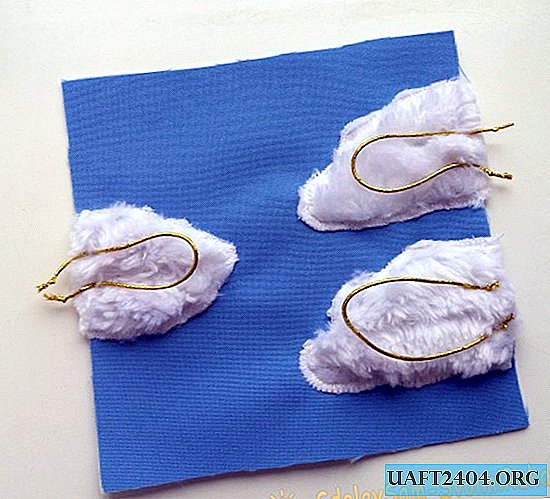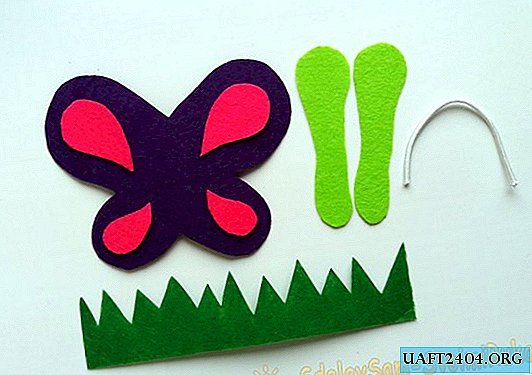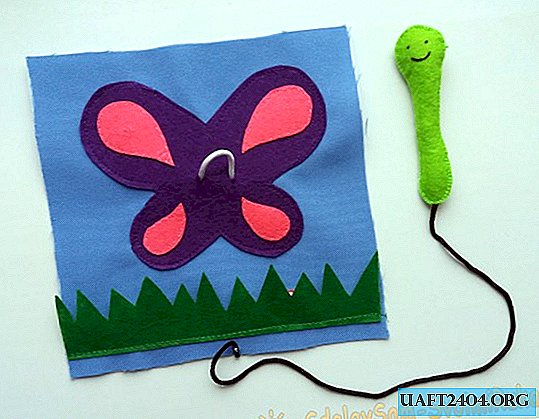Share
Pin
Tweet
Send
Share
Send
The face of this cube is 15 cm in size.
First you need to make a solid foundation: ideally, this is a cube of foam rubber. If you do not find large pieces of foam, you can glue a cube from small pieces. Also, holofiber, synthetic wool, etc. will be suitable as a filler. But in this case, the cube will be softer and worse to keep in shape.

The base can additionally be covered with a fabric cover for strength.
Now you need to cut 6 squares measuring 17 × 17 cm (including 1 cm allowances) from a dense fabric - in this case, gabardine.

Glue the fabric non-woven for greater density.
Everything, you can begin to create each side of the cube.
Ladybug Party
Such a plot will certainly interest the baby: a ladybug can be unfastened - a bear button is hidden inside, as well as pulling on the legs and counting the spots on the back.
Cut 4 pieces of red fleece (or other suitable fabric), 6 legs and specks of black felt, head and eyes - also of felt. Sew eyes to the head, specks to 2 red details. Gently sew (or sew on a typewriter) a zipper by nesting each edge between the two red parts. Cut off the excess part of the zipper and sew the head to the back.
Bast your feet by inserting their ends between the parts of the body, and sew the ladybug to the base fabric. Sew on the button firmly inside.



Cloud Side
The child will like to stroke these fluffy clouds, and also in this plot there is lacing with a bird button.
Cut the clouds out of white synthetic fur and sew to the base fabric. Take small segments of the golden cord on the sides to each cloud (then, when stitching the sides of the cube, they will be firmly fixed). At the bottom, fasten the cord with the button fastened at the end with a few stitches.



Beads Side
Bright beads strung on a gum-cord, the child will be able to move and pull with enthusiasm. There are 5 rows in total, with the number of beads from 1 to 5. It is better to take beads in different colors and from different materials.
Cut the elastic into 17 cm lengths, sweep each line to the base one at a time, string the beads, then sweep to the opposite side.

Side "Geometric Shapes"
Thanks to this side of the cube, the baby will get acquainted with simple geometric shapes. They are multi-colored, and are fastened with Velcro. Each piece on a fabric basis has its own “place” embroidered with threads of the same color.
First, cross-stitch the zigzag braid to the fabric base.
Cut out a dense material (felt, felt) a square, a circle (4.5 cm in diameter), a triangle and a rectangle.
Then cut out “covers” from felt for them - 2 parts each with allowances for seams (0.5 cm each). On one of the two sides, sew on Velcro (soft side).
Sew the “covers” of felt manually in pairs by inserting a dense blank inside.
On the base fabric, sew with a narrow zigzag (or embroider manually) the contours of each figure with threads of the same color. Sew the hard sides of the Velcro to the centers.







Side "Flower-Semitsvetik"
Petals of this bright flower made of fabrics with different textures, each petal with its own filler, which will undoubtedly interest the child.
Cut petals of about 6 cm length from fabrics of different colors, adding allowances for seams of 0.5 cm, 2 parts each. Sew them from the wrong side, leaving a hole in the base of the petal, turn them on the front side and fill. Fillers can be: beads and beads of different sizes, rustling cellophane, small jingle bells, synthetic winterizer, etc.
Sew the left hole in each petal and sew on the base fabric. Sew on top of the middle of the flower from a shiny or simply bright material.


Butterfly Side
The child will surely enjoy playing with the caterpillar on the string: she eats grass and then turns into a butterfly. Bright grass flower buttons also hide in the grass.
For this plot, you will need a felt, dense elastic band and a piece of a durable thin cord.
Cut felt parts - a caterpillar (2 parts), butterfly wings and grass. Embroider the eyes and mouth on one part of the caterpillar. On the base fabric, pin grass from below, stitch it. In the large wing part, make 2 holes for threading the elastic. Sew the end of the gum onto the base, thread the second through the holes in the wings and fasten to the fabric. The wings can be decorated with contrasting pieces of felt.
Sew the caterpillar by stuffing it with synthetic cotton and securing the cord inside. Sew the other end of the cord to the base fabric. Sew the flower buttons firmly in the grass.






Cube assembly
Sew the unfolded sides first (see photo). Do all seams from the wrong side. Leaving the 3 sides of the upper face with the flower unstitched (that is, the “lid” should remain), put the filler cube inside. Manually sew the remaining sides carefully with a blind stitch.





The developmental cube is ready!

Share
Pin
Tweet
Send
Share
Send











